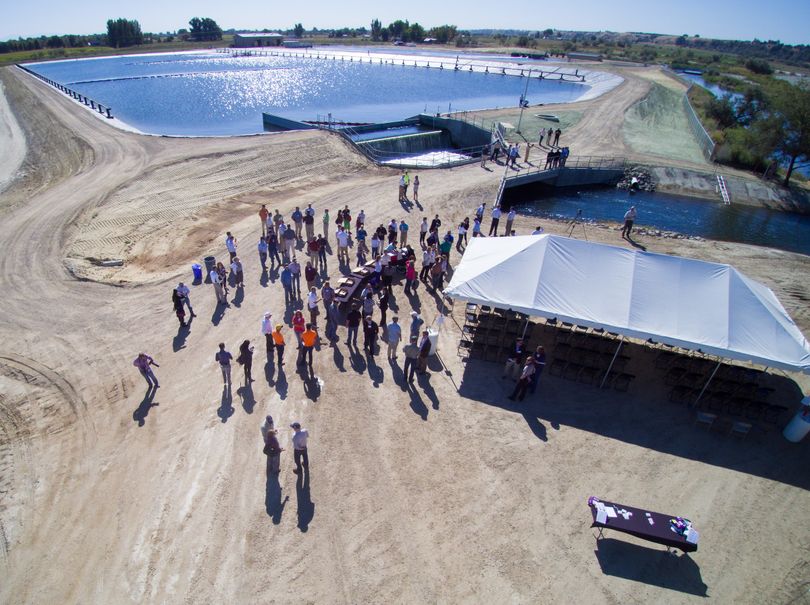Boise commissions new Dixie Drain water-treatment project - downstream in Canyon County

Local, state and federal officials are lauding the new Dixie Drain project, a $21 million water treatment facility the city of Boise has constructed in Canyon County to remove phosphorus from the Boise and Snake rivers. It’s a new way of approaching water quality improvement for the city, and one that officials say could serve as a model for the rest of the country.
The project was eight years in the making, and came as the city faced federal requirements to remove 98 percent of the phosphorus from the water that leaves its sewage treatment facilities and returns to the Boise River. The city is improving its sewage treatment to remove 93 percent of the phosphorus, but it determined that taking that up to 98 percent would be “extraordinarily expensive,” according to a city news release. Since 80 percent of the water that leaves the city’s plants ends up being used downstream to irrigate agricultural fields, it then picks up more phosphorus before it drains back into the river. So the new treatment facility treats the water there – after it comes off the farm fields. That’s less expensive and removes far more of the phosphorus.
John Tippets, director of the Idaho Department of Environmental Quality, said, “Stakeholders worked together to find a path forward that will result in lasting environmental benefits for the Boise River and Snake River systems. The Dixie Drain project exemplifies how various partners can collaborate, leverage strengths and resources, and together implement innovative environmental solutions.”
Dennis McLerran, Region 10 administrator for the EPA, attended today’s commissioning ceremony, and said, “Boise is doing groundbreaking work here that will achieve greater pollution reduction in the Boise River than if the conventional path had been followed.”
Mayor David Bieter, who addressed the gathering along with Sen. Mike Crapo and 2nd District Congressman Mike Simpson, said, “This project is a great example of the way the city of Boise approaches everything we do. Rather than just meeting our obligations, we ask ourselves how we can reach farther and do things better.”
Simpson said, “The Dixie Drain project is an exemplary model of federal, state, and local cooperation. It sends a message that we can achieve desired regulatory results through flexible, innovative, and cost-effective methods. I am so pleased that Idaho is leading the way in creating a framework that can be applied nationwide to help local communities deal with complex water issues.”
In 2010, all four members of Idaho’s congressional delegation toured the project site with McLerran and local and state officials, and urged the EPA to approve the innovative approach to meeting the new standards.
The project is located a few miles upstream from the Boise River’s confluence with the Snake River. The Dixie Drain, dug in the early 20th century, drains irrigation water from farmers’ fields to the river.
